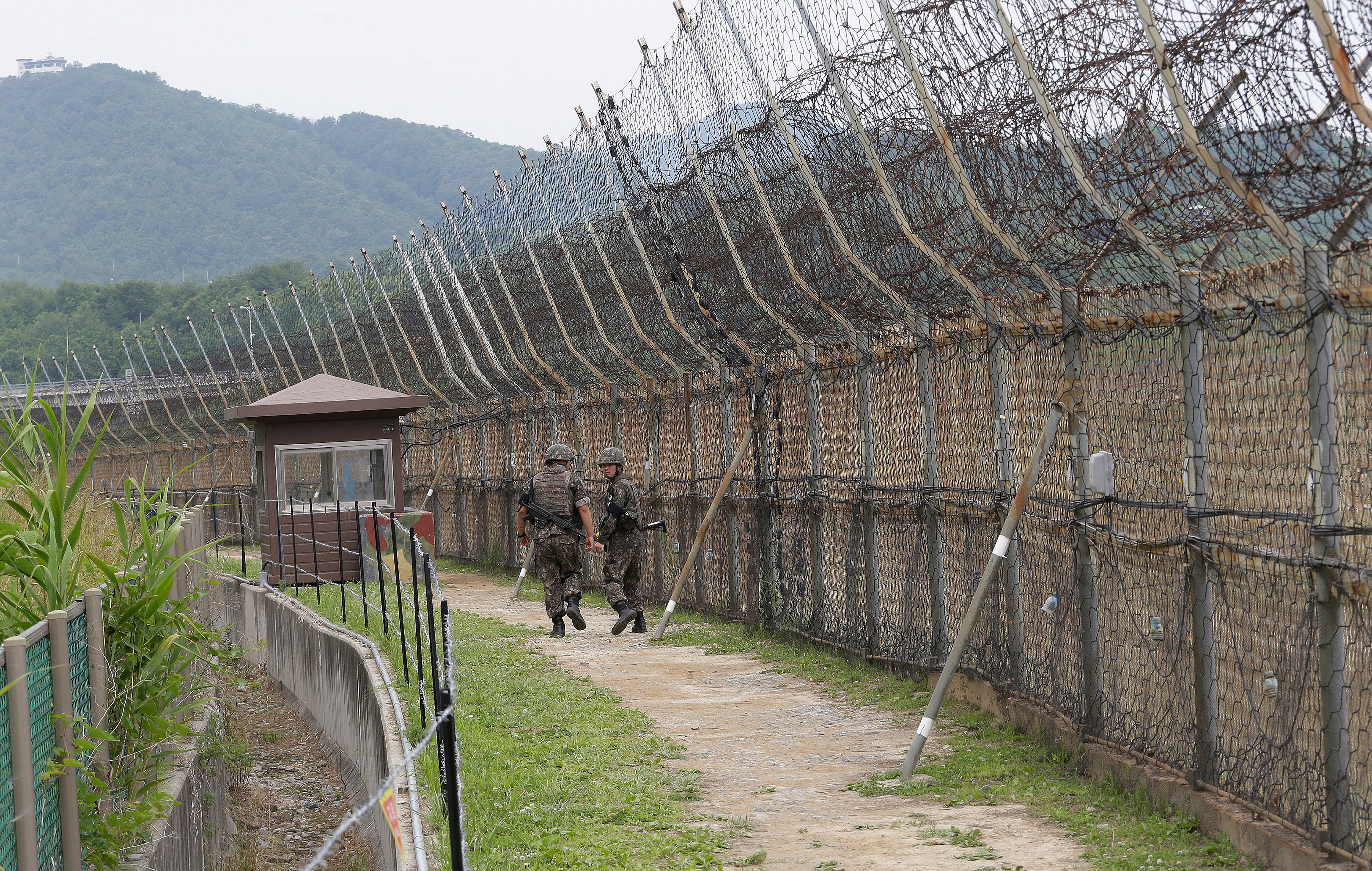Presidential candidate pledges to reopen part of Korean Demilitarized Zone for tourists
‘I will pursue inter-Korean coexistence through practical North Korea policies that benefit both the South and the North,’ says Lee Jae-myung

Your support helps us to tell the story
From reproductive rights to climate change to Big Tech, The Independent is on the ground when the story is developing. Whether it's investigating the financials of Elon Musk's pro-Trump PAC or producing our latest documentary, 'The A Word', which shines a light on the American women fighting for reproductive rights, we know how important it is to parse out the facts from the messaging.
At such a critical moment in US history, we need reporters on the ground. Your donation allows us to keep sending journalists to speak to both sides of the story.
The Independent is trusted by Americans across the entire political spectrum. And unlike many other quality news outlets, we choose not to lock Americans out of our reporting and analysis with paywalls. We believe quality journalism should be available to everyone, paid for by those who can afford it.
Your support makes all the difference.The presidential candidate for South Korea’s ruling party has pledged to reopen a part of the infamous Demilitarized Zone (DMZ) between North and South Korea to tourists for the first time in nearly 15 years.
Lee Jae-myung of the centrist-liberal Democratic Party said he had plans to set up a special “international” tourism zone between the two countries, complete with ecotourism programme.
He announced the proposals during a visit to Goseong, a county on the border in Gangwon Province, South Korea, saying: “I will reopen the doors of tourism to Mount Kumgang as soon as possible,” reported Yonhap news agency.
Jae-myung added: “Starting with exchanges in nonpolitical areas, such as tourism and sports, I will pursue inter-Korean coexistence through practical North Korea policies that benefit both the South and the North.”
He also unveiled his vision for transforming Gangwon Province into a northern economic hub through improved inter-Korean transport links.
The previous Mount Kumgang tourist area in the DMZ was shut down in 2008 after a 53-year-old South Korean female tourist was shot dead by a North Korean guard.
She had wandered into a military area at a mountain resort in the North in the early hours of the morning, according to South Korean officials at the time.
The woman was taking a stroll on a beach before entering a fenced-off North Korean military area near the Mount Kumgang resort.
The resort was immediately closed to tourists following the incident.
It’s already possible for tourists to visit the DMZ, a border barrier first established in 1953 that divides the Korean Peninsula roughly in half.
Before the pandemic, the 160-mile-long, 2.5-mile-wide treaty zone attracted around 1.2 million visitors per year.
The Joint Security Area (JSA), also known as the Panmunjom truce area, is the most popular part of the DMZ for tourist visits, identifiable by its blue Military Armistice Commission Conference Room, which straddles the Military Demarcation Line.
Join our commenting forum
Join thought-provoking conversations, follow other Independent readers and see their replies
Comments